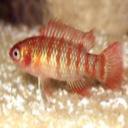Yahoo Answers is shutting down on May 4th, 2021 (Eastern Time) and beginning April 20th, 2021 (Eastern Time) the Yahoo Answers website will be in read-only mode. There will be no changes to other Yahoo properties or services, or your Yahoo account. You can find more information about the Yahoo Answers shutdown and how to download your data on this help page.
Trending News
How do I get the nitrites to stay down in my tank?
I have a 29 gallon tank and all of the other things (pH, Ammonia, Nitrates) are normal but the nitrites are high. Everyone at the fish stores are dumbfounded we put in the chemical that is supposed to lower it but it doesn't seem to help. I have had a small tank most of my childhood until highschool, and I never had this problem.
11 Answers
- Anonymous1 decade agoFavorite Answer
If nitrites are high then your tank isn't done cycling. In a fully cycled tank the nitrites and ammonia will virtually always be zero.
Source(s): This information and detailed profiles of over 2,500 aquarium fish along with over 11,000 photos of aquarium fish can be found at FishGeeks - http://www.aquaria.info/ Tropical fish shirts, hats, mugs and more. http://www.cafepress.com/fishgeeks FishGeeks is proud to announce a series of regularly scheduled chat sessions @ http://www.aquaria.info/x7chat/ 1/12/07 9-10pm EST Need help stocking your Freshwater tank? Stop in and find out what fish will work for you! - PeeTeeLv 71 decade ago
Nitrites or Nitrates,the second stage of tank cycling is the growth of bacteria that convert nitrites into nitrates.I don't think there is a chemical to lower nitrites. Be sure that there is plenty of aeration,(the bacteria need oxygen to do their work). Change some water(25%),no more. Then start 10% daily changes until the nitrites come down. Nitrites are just as toxic to fish as ammonia. If it's really nitrates that we're talking about, the treatment is still the same, water changes. PeeTee
- ZoeLv 61 decade ago
How long have you had your tank?
And when you say ammonia and nitrates normal, what exactly are the numbers? Is Ammonia 0? Are Nitrates 0?
Nitrites usually spike in a tank between the ammonia spike and the nitrate levels rising to aobut 20ppm, about 2-3 weeks after the tank been established.
Has your tank been established a long time?
Did you recently change the filtration media? The sponge, carbon etc? If so, this eliminates a large portion of your beneficial bacteria and can cause ammonia and nitrite spikes.
Anyway, if you have nitrites, it's because you are lacking in nitrifying bacteria. Try to obtain some bio-spira or some gravel or filter media from an established tank.
In the meantime, find yourself a different petstore. Most of them don't know what they're talking about to begin with, and anyone who suggests chemicals to solve the problem lacks experience and knowledge. Chemicals rarely work, and they often cause counter-reactions that affect the tank is ways you wouldn't expect. In the meantime, do frequent small water changes to keep the nitrites down to help your fish.
- julitzLv 44 years ago
do not do a water replace for the time of cycling!! cycling can take 3-4 weeks in many situations. save waiting and examine another day, through the years there should be a decline. when I cycled my fifty six gallon it took 3 weeks, and the ammonia spike replaced into finished fantastically immediately, it replaced into the nitrite to nitrate that looked as if it would take continuously. endurance is the most the following, in simple terms ought to save waiting it out. After the cycling is finished you'll do a 10-20% water replace, yet not earlier.
- How do you think about the answers? You can sign in to vote the answer.
- fish guyLv 51 decade ago
I have a feeling the chemical is giving you a false reading. All the chemicals do is convert nitrites to a different kind of nitrites that are less toxic, but will still show up on a test. So try not using chemicals and do a few water changes and that should help. Chemicals always cause more harm than good for the fish anyway.
- 1 decade ago
My biggest question is how old is your tank? If it is still cycling it might take a few days to a couple weeks for the Nitrite to turn into Nitrate. If you have fish in there that are suffering from Nitrite poisining you can try to do water changes every 1-2 days to get the levels to a bearable level while your biological system catches up.
- 1 decade ago
how long have you had your tank? and most importantly, how many fish are in it? Ive been told one inch of fish per gallon(so in your case 29 inches)MAX. are you cleaning your tank regularly and vacuuming the gravel? there are so many reasons your nitrate could be high because of what a fragile Eco system it is. it took my larger tanks a lot longer to level out than my small ones the nitrate down is helpful, but have you had your tap water tested as well? if you run off of well water, its not regulated like city water is.
- 1 decade ago
do you have anything in there that wasn't made for fish tanks? like plastic toys, or marbles??? some items can emit nitrites into the water, even when everything else is normal. try taking these items out if there are any in there.
also, how long did you cycle your tank? it might not be finished yet.......
good luck, hope this helps!!
(p.s. did you go to school in denver???) ttul!!
- danielle ZLv 71 decade ago
First of all, your very own tap water (If you are using tap water) can be high in nitrates already so you are starting off on the wrong foot.
"Oh no! I've got "high" nitrates! What to do?"... First and foremost, understanding what nitrates are, their sources, alleviation and relative placement in a/the grand scheme of "water quality" is absolutely necessary for aquarists. In reality, nitrates by themselves are not "that" deleterious. What accumulating nitrogenous wastes in the form of nitrate compounds indicates may be symptomatic however, and signal a need to react (slowly) in changing ones management/maintenance of captive marine systems.
Ammonia (ionized or not) is the most common decomposition product of proteins, and excretory product of fishes and invertebrates... and toxic to them at sufficient concentration. It must be dealt with. The easiest, simplest, surest, most fail-safe method is through biological conversion. Hence, the great hub-bub re "cycling" (establishment of beneficial microbial populations) in new captive systems and their protection from population and metabolic stops (e.g. many "medications", abrupt environmental changes...).
Other techniques, gear, approaches can be employed for reducing nitrate, its expedient removal and even prevention.
Prevention:
Foods/Feeding, Livestock Loads. Nitrates are resultant from "too much proteinaceous food input, not enough output"... One easy approach to their limitation is to simply stock and feed your system lightly... particularly with foods of high protein content. Catabolism of protein (made up of amino acids, in turn the source of ammonia) from foods, wastes, decomposition is the root source of the precursors to nitrate: GIGO, garbage in, garbage out.
Detritus in the substrate can be a reservoir, manufacturer of nitrate. Vacuuming a portion of it along with your water changes can reduce this source. Similarly, mechanical filtration media that traps proteinaceous foods and wastes needs to be cleaned and/or replaced on a regular basis to limit these materials release, cycling in the system.
Wet-dry media in same-named filters are a huge source of nitrates. The aerobic bacteria cultured on their vast surface area readily produce nitrates. By and large, aquarists and their aquatic charges are best served by removing such media, converting the same space to live rock, macro-algae culture, either on an alternating light cycle with their main system, or leaving the lights on continuously.
Here comes the usual pitch for frequent partial water changes. Obviously switching out ten-twenty percent of your water with that of zero nitrates reduces the composition percentage of nitrates (and other metabolites) by the same amount. The dilution-solution can be a significant source of nitrate reduction in other ways as well. There are ancillary skimming improvements, bacterial et al. microbial involvement and outright chemical interactions with nitrates with such changes.
Bio-mediation/Bacterial Denitrification:
The so-called "reverse reaction" of nitrification: denitrification is a largely anaerobic set of reactions that serve to convert nitrate ultimately into nitrogen and oxygen.
Live plant use: Both from micro-organisms growing on the surface of live plants as well as the plants uptake of ammonia, other nitrogenous compounds.
There are "nitrate chemical filter materials" sold in the hobby/trade. They don't work in many sets of circumstances, and never directly. There are no practical chemical means of removing nitrate from biological systems.
High nitrate accumulations are more toxic when oxygen is low.
You may there for add air.
- Anonymous1 decade ago
Frequent water changes are the best way to keep the pH level right. You may want to test your tap water too.










